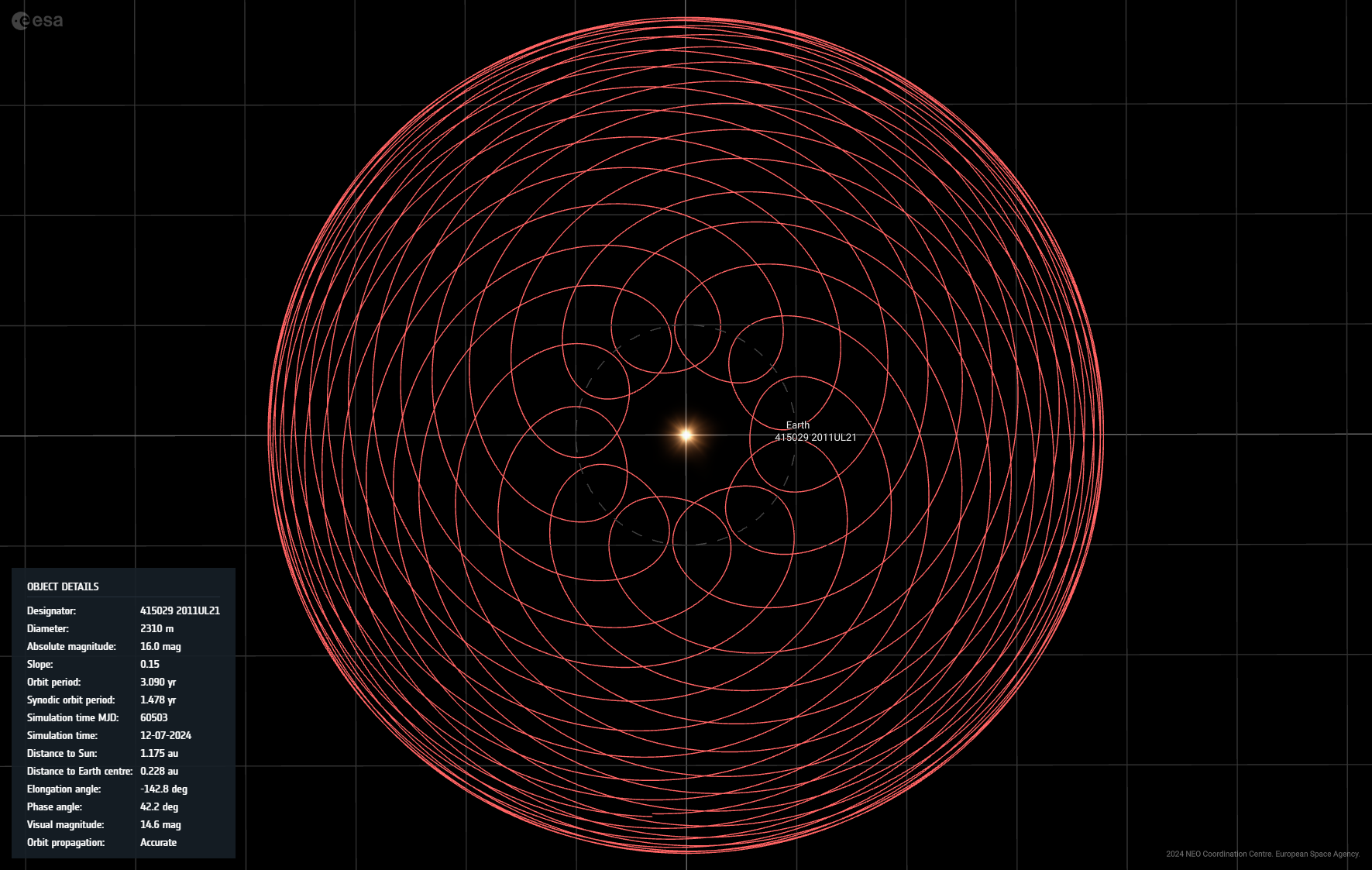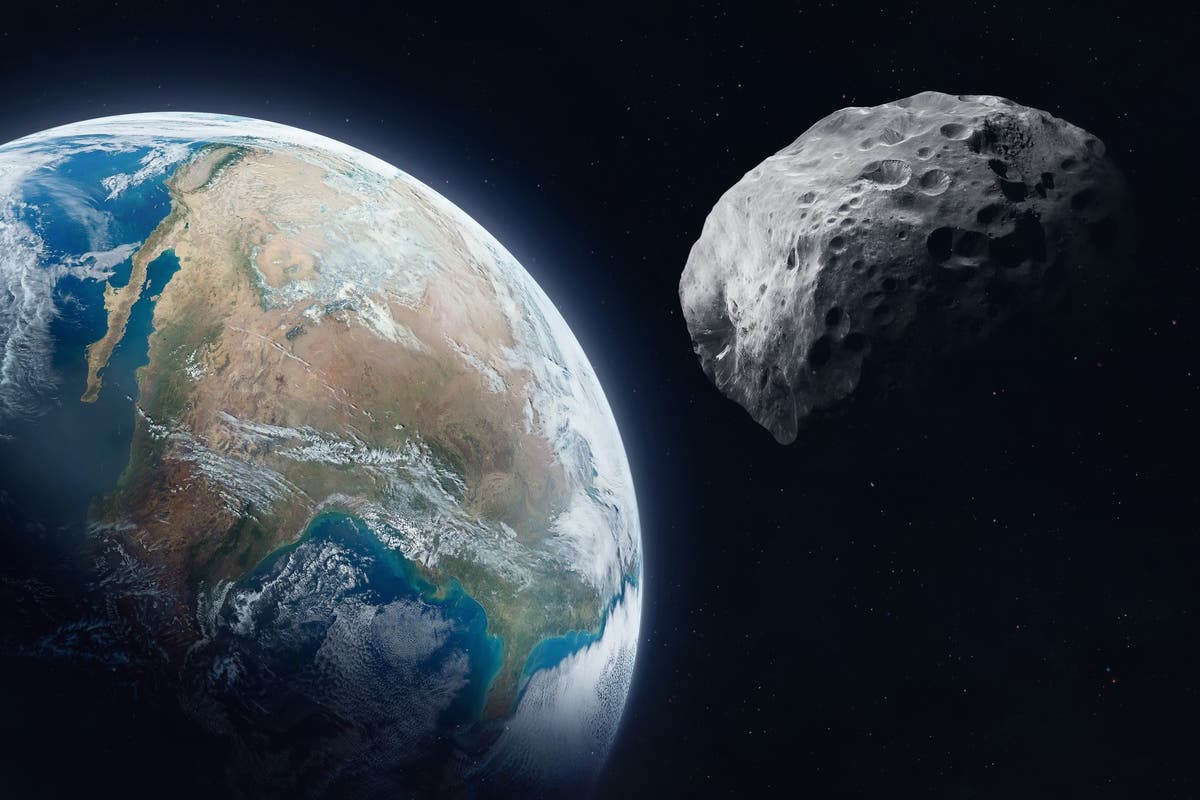Two asteroids, including one large enough to end civilization, will hurtle past our planet this week.
Researchers have given the 7,600 foot-long celestial object – the larger of the space rocks – the catchy name (415029) 2011 UL21. It’s nickname is Planet Killer: a title given to asteroids which are at least 6300-foot wide.
It will fly past planet Earth at 58,000 miles per hour at approximately 4.14pm ET at a distance more than 17 times further away than the moon. Its size and proximity to the planet has seen Nasa brand it a “potentially hazardous asteroid”. Only those with a powerful telescope will catch a glimpse of the spectacle.
The smaller 400-to-850-foot asteroid, 2024 MK, will zip past much closer at about 75 per cent the distance of the moon on Saturday at 9.46am ET. Eagle-eyed stargazers in the US southwest might be able to make out the near-Earth object, given the right conditions.
Those opting to trek up to Hawaii’s Mauna Kea volcano might also be able to see 2024 MK zoom by before sunrise.

But even with good equipment and cloud-free skies, it’s no mean feat for amateur astronomers, says Dr Juan Luis Cano, a member of the Planetary Defense Office at the European Space Agency.
“The object will be moving fast, so you have to have some skills to spot it,” he told The New York Times.
Anybody that misses the celestial fly-over, fret not. A 1,100-foot long asteroid named Apophis is due to fly so close to the Earth’s surface that it’s visible with the naked eye.
On April 13, 2029, the asteroid is expected to fly at less than 20,000 miles away from the planet, which is closer than the orbits of geosynchronous satellites.
Both 2024 MK and its big brother (415029) 2011 UL21 will be precisely tracked and measured as they are pinged by radar arrays on Earth.
Saturday’s flyover comes the day before Asteroid Day, a United Nations-endorsed event with the purpose of raising awareness of asteroid impacts.
While more asteroids are discovered each year, most capable of destroying an entire region are yet to be found.
For planetary defence researchers, it has become a race against time: finding the asteroids before they find Earth.
Researchers are hopeful more planet killers will be unearthed thanks to a duo of asteroid-hunting space telescopes under construction. These include Nasa’s Near-Earth Object Surveyor spacecraft and the Vera C. Rubin Observatory in Chile.
Astronomers only discovered 2024 MK – which is at least twice the length of a space rock that in 1906 levelled an area the size of Washington DC in Siberia – on June 16.
“The case of 2024 MK is yet another reminder about the fact that there are a lot of large objects still to be found,” Dr Cano told the outlet.

Dr. Thomas Hughes is a UK-based scientist and science communicator who makes complex topics accessible to readers. His articles explore breakthroughs in various scientific disciplines, from space exploration to cutting-edge research.








